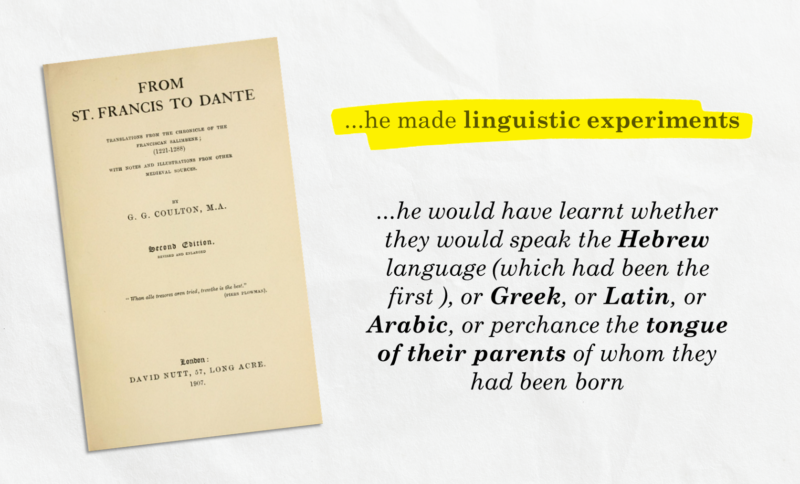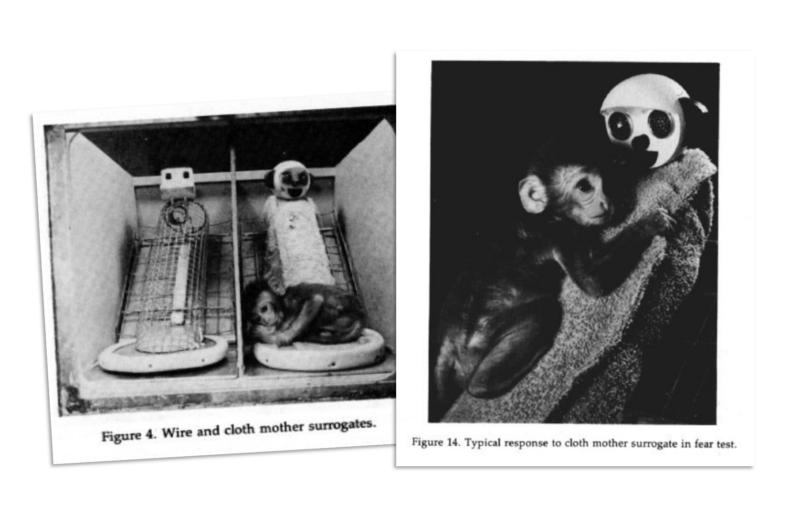Original article (in Serbian) was published on 29/07/2022
A reader reported to us a viral video that spread on Instagram and Facebook in recent months, in which Igor Rakic, founder of the “School of Intellectual Skills” and author of courses on reading and learning techniques, talks about a “terrible experiment with babies”. In his presentation, Rakic, according to his own subsequent admission, managed to miss the century in which the experiment took place as well as the country where the experiment was conducted, while he could not even remember the name of the king who conducted the experiment at first. However, according to his words from the comments on the video, “the experiment stands its ground”. The editors of Tragac tried to determine whether it really stood its ground.
What was Igor Rakic talking about?
“If there were zero neuro-stimulation, what would happen then?” Rakic begins his presentation and immediately moves on to presenting a “terrible experiment” conducted “during the time of a French king, in the 18th or 19th century” in which the physiological needs of 50 babies were taken care of by the nuns “without any touch, tenderness, anything”. “After a year, the last baby died”, says Rakic and adds that “we must communicate” because “we are social beings in every sense, and in the emotional sense” so “our organism has to be stimulated by something”.
The experiment that Rakic is talking about was carried out – according to available records – much earlier, in the 13th century. It is the experiment of Frederick II, who was the king of Sicily and Germany during his reign, and then the emperor of the Holy Roman Empire (until 1250). Rakic also admitted in the comments on his video that he was talking about Frederick II, and not about “some French king of the 18th or 19th century”.
The story of the experiment of Frederick II
Although Rakic used the aforementioned story to explain the importance of neuro-stimulation, Frederick II had a different goal when he allegedly conducted the infamous experiment. Frederick wanted to find out what language would be spoken by children who had not heard any language during their first months of life. He believed it would be Hebrew, Latin, Greek or Arabic. However, the babies – allegedly – died due to a lack of tenderness and care, and Frederick II was left without answers to his questions.

The source of this story is the Chronicles of Salimbeni, a Catholic monk from the Franciscan order who lived in the 13th century. The British historian George Colton published a translated and edited version of those chronicles in 1907, and in his publication, you can also find the story of the notorious experiment with babies. However, according to Colton, Salimbeni wrote down this story only as an example of the emperor’s “curiosity and excesses” along with, for example, the story of how Frederick II cut off a notary’s thumb because he wrote down his name incorrectly (Colton, 1907: 242). Colton’s translation of Salimbeni’s Chronicles does not mention that there were exactly 50 babies who were cared for by nuns or that the babies died within exactly one year. The translation of the record about the mentioned experiment actually tells us (only) the following:
“Like Psamtik in Herodotus, he [Frederick II] carried out linguistic experiments on the ugly bodies of hapless newborns, ‘requesting the fosters and nurses to nurse and bathe and wash the children, but never to chatter or talk to them; for he wanted to discover whether they would speak the Hebrew language (which was the first), or Greek, or Latin, or Arabic, or perhaps the language of their parents. But he tried in vain, because the children could not live without clapping their hands, gestures, joyful faces and flattery”. (Colton, 1907: 242).
From a time distance of over 700 years, it cannot be reliably claimed that this experiment was really carried out, nor that it was carried out exactly as Salimbeni described it, and especially it cannot be used as evidence for the claim that without neuro-stimulation children can die within a year. Modern psychology dealt with this topic in more detail with the help of modern research methods, so it remains unclear why anyone would refer to stories bordering on myths when talking about this topic.
Theory of affective attachment
What Rakic probably wanted to talk about is the theory of affective attachment, the foundations of which were laid by the American psychologist John Bowlby in the 1950s. This theory suggests that the emotional bonds created between mothers and newborns are of great importance for the further mental development of a person and his ability to establish relationships with other human beings throughout life. Earlier theories of behavioral psychologists suggested that food is a factor that develops the bond between mothers and newborns, but Bowlby discovered that the care provided by mothers to children is still the primary source of their bonding (1).

Psychologist Harry Harlow dealt with a similar topic in the late 1950s, publishing his research entitled The Nature of Love, where he tested the behavior of macaque monkeys separated from their mothers immediately after birth. Harlow notes that this ape species differ from humans in maturity at birth and growth rate, but not so much in “basic responses related to affection, including nursing, contact, clinging, and even visual and auditory exploration”.
Harlow divided the newborn monkeys into two groups – those whose surrogate mother was made of wire and provided the young with only food and those whose mother was made of soft materials suitable for touch. After many years of testing, it turned out that infants choose a mother who is suitable for touch, sometimes even before a mother who only provides them with food, which confirms the importance of touch and care. Previous research in the field of developmental psychology has shown the importance of touch and other non-verbal and verbal stimulation for the development of various affective and cognitive functions in children, but not that children would die without such stimulation.



